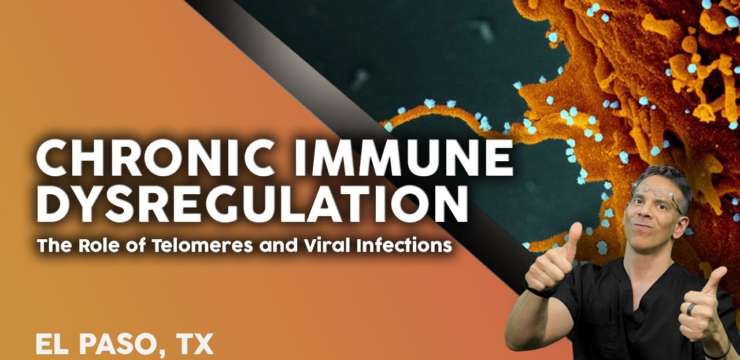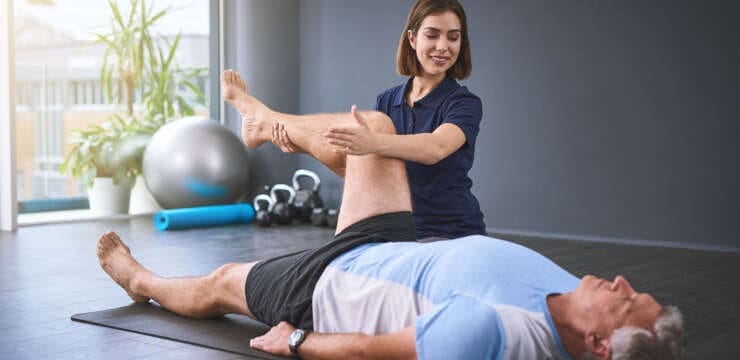
Learn about ethics & jurisprudence for nurses and their essential contributions to upholding standards in nursing and patient advocacy.
Table of Contents
Harnessing the Power of Chiropractic Care and Nursing to Alleviate Musculoskeletal Pain: A Comprehensive Guide
Musculoskeletal pain is like that uninvited guest who shows up at your party and refuses to leave—annoying, disruptive, and sometimes downright unbearable. Whether it’s a nagging lower back ache from sitting at a desk all day or a sharp pain from a car accident, musculoskeletal disorders (MSDs) affect millions, limiting mobility and dimming the joy of everyday activities. But fear not! The dynamic duo of chiropractic care and nursing, especially when led by experts like Dr. Alexander Jimenez in El Paso, Texas, offers a powerful, non-surgical solution to tackle this pain head-on. In this comprehensive guide, we’ll explore why combining these disciplines works so well, dive into the causes of musculoskeletal pain, and share practical tips for managing it—all while sprinkling in a bit of humor to keep things light. So, grab a comfy seat (preferably an ergonomic one!), and let’s dive into the world of pain relief!
Understanding Musculoskeletal Pain: When Your Body Throws a Tantrum
The musculoskeletal system—your body’s scaffolding of bones, muscles, tendons, ligaments, and joints—is what lets you chase after your dog, lift groceries, or do a victory dance after acing a test. However, when it’s under stress, it can exhibit symptoms such as pain, stiffness, or reduced mobility. Let’s break down what causes this ruckus and how environmental factors play a role.
What Causes Musculoskeletal Pain?
Musculoskeletal pain can sneak up on you like a ninja, triggered by a variety of factors, many of which are tied to your environment or lifestyle. Here are the main culprits:
- Physical Trauma: Accidents like car crashes, falls, or sports injuries can cause acute pain. For instance, whiplash from a fender-bender can make your neck feel like it’s auditioning for a grumpy cat role (Jimenez, 2017).
- Repetitive Strain: Jobs or hobbies involving repetitive motions—like typing, lifting, or even knitting—can strain muscles and joints. It’s as if your body is saying, “Enough with the same old song and dance!”
- Poor Posture: Slouching over a laptop or hunching over a phone can misalign your spine, leading to chronic pain. Picture your back begging for a break from the “tech neck” slump.
- Sedentary Lifestyle: Excessive sitting weakens muscles and joints, increasing the risk of pain. A 2018 study found that sedentary adults can reduce pain by adopting behavioral strategies to boost activity (McCabe et al., 2018).
- Environmental Toxins: Exposure to pollutants or poor workplace ergonomics can exacerbate musculoskeletal issues. A cramped, poorly lit desk setup is like a medieval torture device for your spine.
- Chronic Stress: Stress tightens muscles, especially in the neck and shoulders, amplifying pain. It’s like your body is clenching its fists in frustration (Hannibal et al., 2019).
These factors often team up, creating a perfect storm of pain. For example, a sedentary office worker with poor posture and high stress is practically rolling out the red carpet for back pain.
The Musculoskeletal System’s Role
Think of the musculoskeletal system as your body’s construction crew—it provides structure, support, and movement. When something goes wrong, like a misaligned spine or an inflamed joint, it’s like a wobbly scaffold that needs fixing. Pain signals that something’s off, whether it’s a structural issue (like a pinched nerve) or a systemic one (like inflammation). Chiropractic care and nursing work together to stabilize this scaffold, addressing both the immediate pain and its underlying causes.
References:
- Hannibal, K. E., et al. (2019). Cortisol dysregulation and chronic pain syndromes. Journal of Clinical Endocrinology & Metabolism, 104(5), 1535-1545. doi.org/10.1210/jc.2018-02069
- Jimenez, A. (2017). El Paso, TX chiropractor Dr. Alex Jimenez DC | Personal injury specialist. Retrieved from dralexjimenez.com/
- McCabe, M. E., et al. (2018). When Adults Don’t Exercise: Behavioral Strategies to Increase Physical Activity in Sedentary Middle-Aged and Older Adults. Innovation in Aging, 2(1), igy007. doi.org/10.1093/geroni/igy007
The Synergy of Chiropractic Care and Nursing: A Match Made in Healing Heaven
Chiropractic care and nursing might sound like an odd couple, like peanut butter and pickles, but together, they’re a powerhouse for managing musculoskeletal pain. Chiropractic care focuses on fixing the body’s alignment, while nursing takes a broader view, addressing systemic issues like inflammation or nutrition. Dr. Alexander Jimenez, with his dual licensure as a chiropractor and board-certified family nurse practitioner (FNP), brings this synergy to life at his Injury Medical & Chiropractic Clinic in El Paso (Jimenez, 2024).
Chiropractic Care: Tuning Up Your Body’s Framework
Chiropractic care is like giving your body a tune-up at the mechanic. Chiropractors use spinal adjustments, manual therapy, and other non-invasive techniques to correct misalignments (subluxations) in the spine and joints. These misalignments can pinch nerves, cause inflammation, and make you wince every time you move. Here’s how chiropractic care helps:
- Pain Relief: Adjustments reduce nerve pressure, calming pain signals. A 2021 study showed that direct access to physical therapy, which includes chiropractic-like interventions, improves function and quality of life for MSDs (Hon et al., 2021).
- Improved Mobility: Realigning joints restores your range of motion, allowing you to move with ease and fluidity, rather than feeling like a rusty robot.
- Injury Prevention: Fixing biomechanical issues strengthens your body’s foundation, reducing future pain risks.
Think of adjustments as tuning a guitar—when the strings (your spine) are out of whack, the music (your body’s function) sounds off. A quick tweak brings harmony back.
Nursing: The Whole-Body Perspective
As an FNP, Dr. Jimenez looks at the big picture, assessing systemic factors like nutrition, hormones, or stress that fuel musculoskeletal pain. Nurses are trained to see the whole person, not just a sore back or achy knee. Here’s how nursing contributes:
- Nutritional Support: A Poor diet can increase inflammation, worsening pain. Dr. Jimenez uses functional nutrition—think all-natural supplements and anti-inflammatory diets—to support healing (Southwest Functional Medicine, n.d.).
- Hormonal Balance: Stress-induced cortisol spikes can amplify pain. A 2019 study linked cortisol dysregulation to chronic pain syndromes (Hannibal et al., 2019).
- Metabolic Health: Conditions like diabetes or obesity strain the musculoskeletal system. Dr. Jimenez’s metabolic optimization plans help manage weight and prevent chronic diseases (Jimenez, 2024).
Nurses also excel in patient education, teaching you how to make small changes—such as adopting better posture or practicing stress management—to help manage pain. It’s like having a health coach who’s also a medical pro.
Movement Medicine: Chiropractic Care- Video
The Power of Synergy
When chiropractic care and the nursing team up, it’s like Batman and Robin fighting pain together. Chiropractic adjustments fix the structural issues, while nursing tackles the systemic ones. Dr. Jimenez’s dual-scope approach includes:
- Advanced Diagnostics: Using X-rays, MRIs, and blood panels to pinpoint pain’s root causes, from spinal misalignments to metabolic imbalances (Jimenez, 2024).
- Personalized Plans: Combining adjustments, physical therapy, and nutrition to address both symptoms and underlying issues.
- Holistic Healing: Incorporating lifestyle changes, stress management, and non-invasive therapies like electro-acupuncture to promote long-term recovery.
This approach is especially effective for chronic conditions like sciatica, fibromyalgia, or osteoarthritis, where pain stems from multiple sources. For example, a 2019 study found that backward walking, often used in rehab, reduces pain and improves function in knee osteoarthritis, complementing chiropractic care (Anwer et al., 2019).
References:
- Anwer, S., et al. (2019). Effect of 6-week retro or forward walking program on pain, functional disability, quadriceps muscle strength, and performance in individuals with knee osteoarthritis: A randomized controlled trial (retro-walking trial). BMC Musculoskeletal Disorders, 20(1), 159. doi.org/10.1186/s12891-019-2537-9
- Hannibal, K. E., et al. (2019). Cortisol dysregulation and chronic pain syndromes. Journal of Clinical Endocrinology & Metabolism, 104(5), 1535-1545. doi.org/10.1210/jc.2018-02069
- Hon, S., Ritter, R., & Allen, D. D. (2021). Cost-effectiveness and outcomes of direct access to physical therapy for musculoskeletal disorders compared to physician-first access in the United States: Systematic review and meta-analysis. Physical Therapy, 101(1), pzaa201. doi.org/10.1093/ptj/pzaa201
- Jimenez, A. (2024). Injury Medical & Chiropractic Clinic. Retrieved from elpasobackclinic.com/
- Jimenez, A. (2025). Dr. Alexander Jimenez DC, APRN, FNP-BC, IFMCP, CFMP, ATN. Retrieved from www.linkedin.com/in/dralexjimenez/
- Southwest Functional Medicine. (n.d.). El Paso, TX Health Coach Clinic – Functional Medicine and Wellness. Retrieved from healthcoach.clinic/
Ethics and Jurisprudence: The Nurse Practice Act in Action
The Texas Nurse Practice Act (NPA) is like the rulebook for nurses, ensuring they provide safe, ethical care. For Dr. Jimenez, adhering to the NPA as an FNP is key when blending nursing with chiropractic care. The NPA emphasizes:
- Patient-Centered Care: Nurses must prioritize patient safety and well-being, aligning with functional medicine’s focus on root causes over symptom suppression.
- Scope of Practice: FNPs can diagnose and manage conditions within their scope of practice, complementing chiropractic care by addressing systemic health issues.
- Ethical Standards: Nurses must maintain confidentiality, obtain informed consent, and collaborate with other providers, ensuring seamless integration with chiropractic interventions.
Dr. Jimenez’s dual licensure ensures he follows both chiropractic and nursing regulations, delivering evidence-based care that’s safe and effective. In personal injury cases, this ethical framework is crucial, as accurate documentation and collaboration with legal teams help patients get fair compensation while meeting legal standards (Texas Nurse Practice Act, n.d.).
References:
- Jimenez, A. (2017). El Paso, TX chiropractor Dr. Alex Jimenez DC | Personal injury specialist. Retrieved from dralexjimenez.com/
- Texas Board of Nursing. (n.d.). CE Broker – Lesson 1: The Texas Nurse Practice Act.
Dr. Alexander Jimenez: El Paso’s Go-To for Personal Injury Care
El Paso’s busy streets make motor vehicle accidents (MVAs) a common cause of musculoskeletal injuries. Dr. Jimenez excels as a leading practitioner for MVA victims, utilizing his expertise in chiropractic care and nursing to deliver exceptional care. His ability to connect injuries to objective findings makes him a trusted name in personal injury cases (Jimenez, 2017).
Clinical Associations and Diagnostics
Dr. Jimenez uses advanced imaging (X-rays, MRIs) and diagnostic evaluations to pinpoint injury causes. A 2020 study highlights musculoskeletal ultrasound’s accuracy in detecting ligament and tendon injuries, complementing his imaging approach (Colò et al., 2020). His dual-scope procedures include:
- Chiropractic Assessments: Identifying spinal misalignments and joint dysfunctions that cause pain.
- Medical Evaluations: Using blood panels to detect inflammation or hormonal imbalances.
- Neurological Testing: Assessing nerve damage, like radiculopathy, which causes numbness or weakness (Jimenez, 2018).
This thorough approach is like solving a puzzle, ensuring no piece is missing. By addressing both biomechanical and systemic factors, Dr. Jimenez creates tailored treatment plans that speed recovery and prevent chronic issues.
Bridging Medical and Legal Worlds
In personal injury cases, documentation is king. Dr. Jimenez’s expertise as a liaison between medical and legal teams ensures examination findings are translated into clear, admissible reports. This helps patients secure fair compensation while meeting ethical and legal standards. For example, a whiplash patient might experience delayed symptoms like headaches. Dr. Jimenez’s use of imaging and neurological tests detects subtle injuries, ensuring they’re documented for legal purposes (Jimenez, 2017).
References:
- Colò, G., et al. (2020). Ultrasound or MRI in the Evaluation of Anterior Talofibular Ligament (ATFL) Injuries: A Systematic Review and Meta-Analysis. La Radiologia Medica, 125(10), 911-920. doi.org/10.1007/s11547-020-01234-6
- Jimenez, A. (2017). El Paso, TX chiropractor Dr. Alex Jimenez DC | Personal injury specialist. Retrieved from dralexjimenez.com/
- Jimenez, A. (2018). Injury Medical & Chiropractic Clinic. Retrieved from elpasobackclinic.com/
Non-Surgical Treatments: A Toolkit for Pain Relief
Chiropractic care, paired with other non-surgical treatments, is like assembling a superhero team to fight musculoskeletal pain. Dr. Jimenez uses a variety of modalities to tackle overlapping risk profiles, ensuring comprehensive care. Here’s the lineup:
1. Chiropractic Adjustments
Adjustments correct spinal misalignments, reducing nerve compression and boosting function. A 2015 study found that isometric exercises, often paired with adjustments, reduce low back pain by enhancing muscle activity (Rhyu et al., 2015).
2. Physical Therapy
Exercises like backward walking or isometric training strengthen muscles and improve mobility. A 2019 meta-analysis showed backward walking reduces pain and disability in knee osteoarthritis (Anwer et al., 2019).
3. Functional Nutrition
Dr. Jimenez uses all-natural nutraceuticals and dietary plans to curb inflammation. For example, turmeric supplements can reduce post-injury inflammation, aiding recovery (Jimenez, 2025).
4. Electro-Acupuncture
This technique uses electrical stimulation on acupuncture points to ease pain. A 2018 study confirmed its effectiveness for neuropathic pain (Li et al., 2018).
5. Platelet-Rich Plasma (PRP) Therapy
PRP injections promote tissue repair and reduce inflammation. A 2019 meta-analysis found PRP effective for lumbar pain (Sanapati et al., 2019).
These treatments work together like a well-orchestrated band, addressing pain from multiple angles without resorting to surgery or medications.
References:
- Anwer, S., et al. (2019). Effect of 6-week retro or forward walking program on pain, functional disability, quadriceps muscle strength, and performance in individuals with knee osteoarthritis: A randomized controlled trial (retro-walking trial). BMC Musculoskeletal Disorders, 20(1), 159. doi.org/10.1186/s12891-019-2537-9
- Li, Z., et al. (2018). Electro-acupuncture for neuropathic pain. Evidence-Based Complementary and Alternative Medicine, 2018, 1589874. doi.org/10.1155/2018/1589874
- Rhyu, H. S., et al. (2015). The Effects of Isometric Exercise Types on Pain and Muscle Activity in Patients with Low Back Pain. Journal of Exercise Rehabilitation, 11(4), 211-214. doi.org/10.12965/jer.150224
- Sanapati, J., et al. (2019). Platelet-rich plasma for lumbar pain: A meta-analysis. Pain Physician, 22(4), 311-326. pubmed.ncbi.nlm.nih.gov/31315709/
- Jimenez, A. (2025). Dr. Alexander Jimenez DC, APRN, FNP-BC, IFMCP, CFMP, ATN. Retrieved from www.linkedin.com/in/dralexjimenez/
Small Changes, Big Impact: Dr. Jimenez’s Clinical Insights
Dr. Jimenez believes small, sustainable changes can make a big difference in managing musculoskeletal pain. Here are his top tips:
- Fix Your Posture: Use ergonomic chairs or standing desks. Dr. Jimenez suggests sitting “like you’re in a job interview” to keep your spine happy.
- Move More: Short walks or stretches throughout the day can help prevent stiffness. A 2018 study found that even a single exercise session can boost energy and reduce fatigue, thereby aiding in pain management (Larson et al., 2018).
- Eat Smart: Anti-inflammatory foods like salmon or nuts reduce pain. Dr. Jimenez’s nutrition plans are tailored to each patient (Southwest Functional Medicine, n.d.).
- Chill Out: Deep breathing or meditation lowers cortisol, easing muscle tension. It’s like telling your body, “Take a chill pill!”
- Get Checked: Regular assessments, like the Timed Up and Go (TUG) test, catch mobility issues early, especially in older adults (Podsiadlo & Richardson, 1991).
These tweaks, paired with professional care, turn pain management into a lifestyle, not a chore.
References:
- Larson, R. D., et al. (2018). The effect of a single bout of exercise on energy and fatigue states: A systematic review and meta-analysis. Fatigue: Biomedicine, Health & Behavior, 6(4), 210-224. doi.org/10.1080/21641846.2018.1514366
- Podsiadlo, D., & Richardson, S. (1991). Timed Up and Go (TUG) test: Normative reference values for ages 20 to 59 years and relationships with physical and mental health risk factors. Journal of Geriatric Physical Therapy, 14(1), 28-34. pubmed.ncbi.nlm.nih.gov/32303969/
- Southwest Functional Medicine. (n.d.). El Paso, TX Health Coach Clinic – Functional Medicine and Wellness. Retrieved from healthcoach.clinic/
Personal Injury Care in El Paso: Why Dr. Jimenez Stands Out
El Paso’s busy roads make MVAs a leading cause of musculoskeletal injuries. Dr. Jimenez is a go-to for victims, offering comprehensive care that blends chiropractic and nursing expertise. His ability to link injuries to objective findings is critical for recovery and legal outcomes (Jimenez, 2017).
Why It Matters
Personal injury cases require precise diagnosis and documentation to ensure fair compensation. Dr. Jimenez’s dual expertise allows him to:
- Diagnose Accurately: Using advanced imaging and neurological tests to detect injuries like disc herniations or nerve compression.
- Treat Holistically: Combining adjustments, physical therapy, and nutrition to promote recovery without surgery.
- Support Legal Claims: Providing detailed reports that connect injuries to the accident, aiding insurance and legal processes.
For example, a patient with sciatica from an MVA might benefit from adjustments to relieve nerve pressure, physical therapy to strengthen muscles, and nutrition to reduce inflammation—all under Dr. Jimenez’s care.
References:
- Jimenez, A. (2017). El Paso, TX chiropractor Dr. Alex Jimenez DC | Personal injury specialist. Retrieved from dralexjimenez.com/
Conclusion: A Serious Note on Healing
We’ve had some fun comparing chiropractic care to tuning a guitar or picturing your spine as a grumpy protester, but musculoskeletal pain is a serious issue that can disrupt your life. Dr. Alexander Jimenez’s unique blend of chiropractic and nursing expertise provides a powerful, non-surgical solution that addresses both structural and systemic causes of pain. Through advanced diagnostics, personalized treatments, and small lifestyle changes, he helps patients in El Paso and beyond—especially personal injury victims—reclaim their health. Whether you’re dealing with chronic pain or recovering from an accident, his approach ensures comprehensive care tailored to your needs.
Disclaimer: This blog post is for informational purposes only and is not a substitute for professional medical advice. Always consult a qualified healthcare provider, such as Dr. Jimenez, for a personalized diagnosis and treatment. The information is based on evidence-based practices within the scope of chiropractic and nursing care, and individual results may vary. For specific health concerns or legal advice related to personal injury cases, contact Dr. Jimenez’s office at (915) 850-0900 or visit dralexjimenez.com/ or healthcoach.clinic/.
References:
- Anwer, S., et al. (2019). Effect of 6-week retro or forward walking program on pain, functional disability, quadriceps muscle strength, and performance in individuals with knee osteoarthritis: A randomized controlled trial (retro-walking trial). BMC Musculoskeletal Disorders, 20(1), 159. doi.org/10.1186/s12891-019-2537-9
- Colò, G., et al. (2020). Ultrasound or MRI in the evaluation of anterior talofibular ligament (ATFL) injuries: Systematic review and meta-analysis. La Radiologia Medica, 125(10), 911-920. doi.org/10.1007/s11547-020-01234-6
- Hannibal, K. E., et al. (2019). Cortisol dysregulation and chronic pain syndromes. Journal of Clinical Endocrinology & Metabolism, 104(5), 1535-1545. doi.org/10.1210/jc.2018-02069
- Hon, S., Ritter, R., & Allen, D. D. (2021). Cost-effectiveness and outcomes of direct access to physical therapy for musculoskeletal disorders compared to physician-first access in the United States: Systematic review and meta-analysis. Physical Therapy, 101(1), pzaa201. doi.org/10.1093/ptj/pzaa201
- Jimenez, A. (2017). El Paso, TX chiropractor Dr. Alex Jimenez DC | Personal injury specialist. Retrieved from dralexjimenez.com/
- Jimenez, A. (2018). Injury Medical & Chiropractic Clinic. Retrieved from elpasobackclinic.com/
- Jimenez, A. (2024). Injury Medical & Chiropractic Clinic. Retrieved from elpasobackclinic.com/
- Jimenez, A. (2025). Dr. Alexander Jimene,z DC, APRN, FNP-BC, IFMCP, CFMP, ATN. Retrieved from www.linkedin.com/in/dralexjimenez/
- Larson, R. D., et al. (2018). The effect of a single bout of exercise on energy and fatigue states: A systematic review and meta-analysis. Fatigue: Biomedicine, Health & Behavior, 6(4), 210-224. doi.org/10.1080/21641846.2018.1514366
- Li, Z., et al. (2018). Electro-acupuncture for neuropathic pain. Evidence-Based Complementary and Alternative Medicine, 2018, 1589874. doi.org/10.1155/2018/1589874
- McCabe, M. E., et al. (2018). When Adults Don’t Exercise: Behavioral Strategies to Increase Physical Activity in Sedentary Middle-Aged and Older Adults. Innovation in Aging, 2(1), igy007. doi.org/10.1093/geroni/igy007
- Podsiadlo, D., & Richardson, S. (1991). Timed Up and Go (TUG) test: Normative reference values for ages 20 to 59 years and relationships with physical and mental health risk factors. Journal of Geriatric Physical Therapy, 14(1), 28-34. pubmed.ncbi.nlm.nih.gov/32303969/
- Rhyu, H. S., et al. (2015). The Effects of Isometric Exercise Types on Pain and Muscle Activity in Patients with Low Back Pain. Journal of Exercise Rehabilitation, 11(4), 211-214. doi.org/10.12965/jer.150224
- Sanapati, J., et al. (2019). Platelet-rich plasma for lumbar pain: A meta-analysis. Pain Physician, 22(4), 311-326. pubmed.ncbi.nlm.nih.gov/31315709/
- Southwest Functional Medicine. (n.d.). El Paso, TX Health Coach Clinic – Functional Medicine and Wellness. Retrieved from healthcoach.clinic/
- Texas Board of Nursing. (n.d.). CE Broker – Lesson 1: The Texas Nurse Practice Act.
Disclaimers
Professional Scope of Practice *
The information herein on "Ethics & Jurisprudence in Healthcare Settings for Nurses" is not intended to replace a one-on-one relationship with a qualified health care professional or licensed physician and is not medical advice. We encourage you to make healthcare decisions based on your research and partnership with a qualified healthcare professional.
Blog Information & Scope Discussions
Welcome to El Paso's wellness blog, where Dr. Alex Jimenez, DC, FNP-C, a board-certified Family Practice Nurse Practitioner (FNP-C) and Chiropractor (DC), presents insights on how our team is dedicated to holistic healing and personalized care. Our practice aligns with evidence-based treatment protocols inspired by integrative medicine principles, similar to those found on dralexjimenez.com, focusing on restoring health naturally for patients of all ages.
Our areas of chiropractic practice include Wellness & Nutrition, Chronic Pain, Personal Injury, Auto Accident Care, Work Injuries, Back Injury, Low Back Pain, Neck Pain, Migraine Headaches, Sports Injuries, Severe Sciatica, Scoliosis, Complex Herniated Discs, Fibromyalgia, Chronic Pain, Complex Injuries, Stress Management, Functional Medicine Treatments, and in-scope care protocols.
Our information scope is limited to chiropractic, musculoskeletal, physical medicine, wellness, contributing etiological viscerosomatic disturbances within clinical presentations, associated somato-visceral reflex clinical dynamics, subluxation complexes, sensitive health issues, and functional medicine articles, topics, and discussions.
We provide and present clinical collaboration with specialists from various disciplines. Each specialist is governed by their professional scope of practice and their jurisdiction of licensure. We use functional health & wellness protocols to treat and support care for the injuries or disorders of the musculoskeletal system.
Our videos, posts, topics, subjects, and insights cover clinical matters, issues, and topics that relate to and directly or indirectly support our clinical scope of practice.*
Our office has reasonably attempted to provide supportive citations and has identified the relevant research studies or studies supporting our posts. We provide copies of supporting research studies available to regulatory boards and the public upon request.
We understand that we cover matters that require an additional explanation of how they may assist in a particular care plan or treatment protocol; therefore, to discuss the subject matter above further, please feel free to ask Dr. Alex Jimenez, DC, APRN, FNP-BC, or contact us at 915-850-0900.
We are here to help you and your family.
Blessings
Dr. Alex Jimenez DC, MSACP, APRN, FNP-BC*, CCST, IFMCP, CFMP, ATN
email: coach@elpasofunctionalmedicine.com
Licensed as a Doctor of Chiropractic (DC) in Texas & New Mexico*
Texas DC License # TX5807
New Mexico DC License # NM-DC2182
Licensed as a Registered Nurse (RN*) in Texas & Multistate
Texas RN License # 1191402
ANCC FNP-BC: Board Certified Nurse Practitioner*
Compact Status: Multi-State License: Authorized to Practice in 40 States*
Graduate with Honors: ICHS: MSN-FNP (Family Nurse Practitioner Program)
Degree Granted. Master's in Family Practice MSN Diploma (Cum Laude)
Dr. Alex Jimenez, DC, APRN, FNP-BC*, CFMP, IFMCP, ATN, CCST
My Digital Business Card






